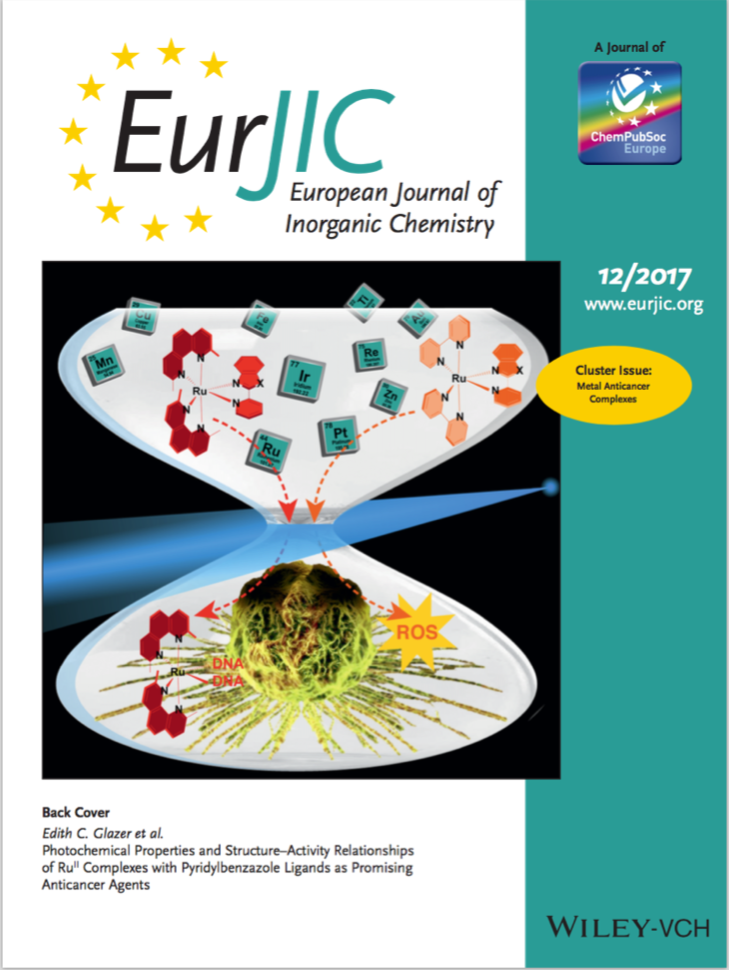Glazer research group's work highlighted on the back cover of the European Journal of Inorganic Chemistry
A research study performed by Dr. Dmytro Havrylyuk, Dr. David Heidary, Leona Nease, Dr. Sean Parkin, and Dr. Edith Glazer was profiled on the back cover of the journal The European Journal of Inorganic Chemistry for a special cluster issue titled "Metal Anticancer Complexes – Activity, Mechanism of Action and Future Perspectives".


